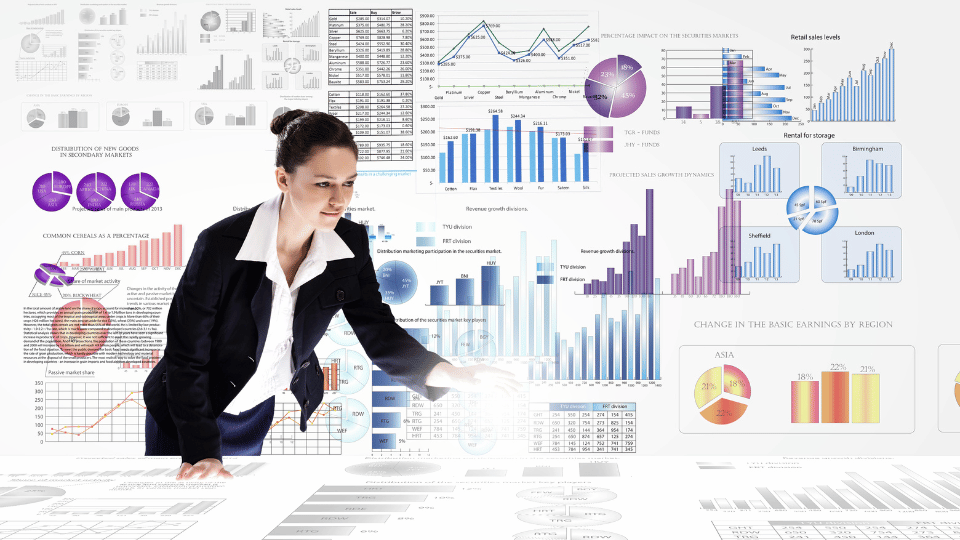Welcome to the ultimate guide to big data analytics! In today’s digital age, data is being generated at an unprecedented rate. From social media posts to online transactions, every interaction leaves a digital footprint. This massive amount of data, known as big data, holds valuable insights that can drive business growth and innovation. As a key component of the Industrial Revolution (IR) 4.0, big data analytics is shaping the future of global industries by enabling smarter decision-making and enhanced operational efficiencies.
In this guide, we will explore what big data analytics is, how it works, and why it is important. We will also discuss challenges of implementing big data analytics, along with the best practices in data analytics. If you are a business owner, a data scientist, or simply curious about the world of big data, this guide will provide you with a comprehensive understanding of big data analytics.
Big data analytics refers to collecting, processing, cleaning, and analyzing large datasets to help organizations operationalize their big data. In other words, big data analytics is the often complex process of collecting, examining, and analyzing large amounts of data to uncover information — such as hidden patterns, correlations, market trends and insights — that can help businesses make informed decisions.

Big data also refers to extremely large and diverse collections of structured, unstructured, and semi-structured data that continues to grow exponentially over time. Data analytics converts raw data into actionable insights. It includes a range of tools, technologies, and processes used to find trends and solve problems.
Big data analytics works by collecting and analyzing large volumes of data to uncover valuable insights and patterns. The process begins with data collection, where data is gathered from various sources such as social media, sensors, and transaction records. Once the data is collected, it is stored in a data warehouse or a data lake, where it can be easily accessed and processed.
Next, the data is cleaned and transformed to ensure its quality and compatibility with the analytics tools. After the data is prepared, it is analyzed using various techniques such as statistical analysis, data mining, and machine learning algorithms. These techniques help in identifying patterns, correlations, and trends within the data.
The insights derived from the analysis are then used to make informed decisions and drive business strategies. Big data analytics also involves the use of visualization tools to present the findings in a clear and understandable manner. This allows stakeholders to easily interpret the results and take appropriate actions based on the insights.

Big data analytics is an iterative process, where the analysis is continuously refined and updated as new data becomes available. This ensures that the insights remain relevant and up-to-date in a rapidly changing business environment.
One of the key reasons why big data analytics is important is its ability to provide organizations with a competitive advantage. By leveraging data analytics, companies can uncover hidden opportunities, optimize processes, and improve overall performance that can drive business growth.
Another reason why big data analytics is important is its impact on customer satisfaction. By analyzing customer data, companies can understand customer preferences, behavior, and sentiment, allowing them to personalize their offerings and provide better customer experiences. This enables businesses decide more tailored and effective marketing campaigns.

For example, social media business owners utilize insights from platforms like TikTok, Facebook, and Instagram to analyze follower engagement and preferences. This data helps them create content that resonates more effectively with their audience, leading to increased engagement and more successful promotions.
Another significant benefit of big data analytics is the ability to detect patterns and trends in data, which can help companies identify new revenue opportunities and stay ahead of the competition. For example, by analyzing which products customers purchase most frequently, businesses can optimize their stock levels to provide more of these popular items, thereby increasing sales and reducing losses from unsold inventory.
Big data analytics also plays a crucial role in risk management. By analyzing large volumes of data, organizations can identify potential risks and take proactive measures to mitigate them. This not only helps prevent financial losses and ensure business continuity but also leads to improved operational efficiency and better resource utilization.
Furthermore, big data analytics is important for innovation. By analyzing data, companies can identify market trends, customer needs, and emerging technologies, enabling them to develop innovative products and services that meet the demands of the market.
Lastly, big data analytics is important for improving operational efficiency. By analyzing data on various aspects of operations, such as supply chain management, production processes, and resource allocation, organizations can identify inefficiencies and make data-driven decisions to optimize their operations.
Big data analytics also plays a pivotal role in promoting sustainability within organizations. By analyzing extensive data on energy use, waste production, and resource consumption, companies can pinpoint inefficiencies and areas for improvement. This enables them to implement more sustainable practices, reduce their carbon footprint, and comply with environmental regulations, all of which can lead to cost savings and a stronger, more positive brand image among eco-conscious consumers.
One of the main challenges of big data analytics is the storage and processing of large volumes of data. Traditional data storage and processing systems are not equipped to handle the massive amounts of data generated by big data analytics. This requires organizations to invest in new infrastructure and technologies to store and process big data efficiently.
Another challenge of big data analytics is data security and privacy. With the increase in data collection and analysis, there is a greater risk of data breaches and unauthorized access to sensitive information. Organizations need to implement robust security measures to protect the privacy and integrity of the data.
Data quality is another significant challenge in big data analytics. Big data is often characterized by its variety, velocity, and volume, which can lead to data quality issues such as incomplete or inaccurate data. It is crucial for organizations to have mechanisms in place to identify and address data quality issues to ensure the reliability and validity of the analytics results.
Scaling big data systems is also a challenge in big data analytics. As the volume of data grows, organizations need to scale their infrastructure and systems to handle the increased workload. This requires careful planning and investment in scalable technologies and architectures.
Additionally, the lack of experience and expertise in big data analytics poses a challenge for organizations. Big data analytics requires specialized skills and knowledge in data analysis, statistics, and programming. Organizations need to invest in training and hiring professionals with the necessary expertise to effectively analyze and interpret big data.
Lastly, integrating and managing data from various sources is a challenge in big data analytics. Big data often comes from multiple sources, such as social media, sensors, and transactional systems. Integrating and harmonizing data from these diverse sources can be complex and time-consuming. Organizations need to have robust data integration and management strategies in place to ensure the seamless flow of data for analysis.
Start slowly and move quickly in later stages: The initial big data project shouldn’t have an exceptionally high bar. It is better to start with small, manageable projects and gradually scale up as you gain more experience and confidence.
Define the objectives and scope of your big data analytics project: Clearly identify what you want to achieve and the specific areas of your business that you want to improve through data analysis. This will help you stay focused and ensure that your efforts are aligned with your overall business goals.
Ensure data quality and governance: Big data analytics relies heavily on the accuracy and reliability of the data being analyzed. Implement data quality checks and establish data governance processes to ensure that your data is clean, consistent, and trustworthy.
Choose the appropriate techniques and tools for your big data analytics project: There are various techniques and tools available for analyzing big data, such as data mining, machine learning, and predictive analytics. Select the ones that are most suitable for your specific needs and goals.
Implement the analytics pipeline: Create a well-defined and efficient process for collecting, processing, cleaning, and analyzing your big data. This pipeline should be scalable and flexible to accommodate the growing volume and variety of data.
Build an analytics culture within your organization: Encourage a data-driven mindset and promote the use of analytics in decision-making at all levels. Provide training and resources to empower your employees to leverage big data analytics effectively.
Emphasize business value: Focus on extracting actionable insights from your big data that can drive tangible business outcomes. Prioritize projects and initiatives that have the potential to deliver significant value and impact to your organization.
Iterate often and continuously improve: Big data analytics is an iterative process that requires constant learning and refinement. Regularly evaluate the effectiveness of your analytics initiatives, learn from your successes and failures, and make necessary adjustments to improve your outcomes.
Re-engineer data systems to support big data analytics: Traditional data systems may not be equipped to handle the volume, velocity, and variety of big data. Consider implementing modern data infrastructure and technologies, such as cloud computing and distributed processing, to enable efficient and scalable big data analytics.
Focus on useful data islands: Instead of trying to analyze all available data, focus on specific data islands that are most relevant and valuable for your business objectives. This approach allows you to prioritize your efforts and derive meaningful insights from targeted data sources.
Encourage team collaborations: Big data analytics requires cross-functional collaboration and expertise from various disciplines, such as data science, statistics, and domain knowledge. Foster a collaborative environment where different teams can work together to leverage their skills and insights for better analytics outcomes.
Throughout this guide, we have explored what big data analytics is, how it works, and why it is important. We have also discussed the challenges associated with implementing big data analytics, as well as best practices for successful implementation.
By leveraging big data analytics, businesses will have the potential to revolutionize the way businesses operate and make decisions as it provides valuable insights that can drive innovation, improve efficiency, and deliver better outcomes. As technology continues to advance and data volumes grow, the importance of big data analytics will only increase. Organizations that embrace this technology and leverage its power will be well-positioned for success in the digital age.